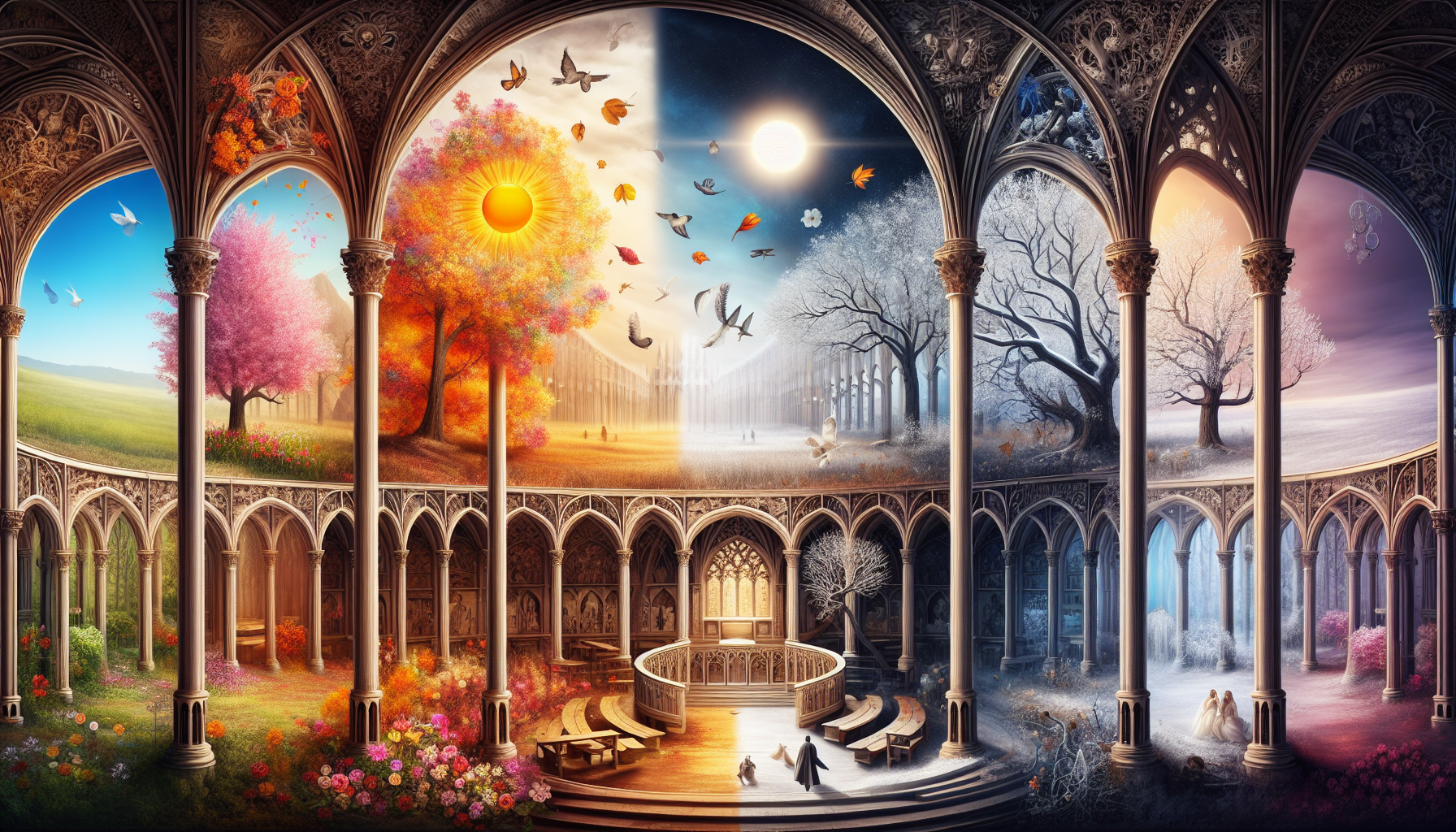The transcendent beauty of Antonio Vivaldi’s The Four Seasons has continued to captivate audiences since its composition in 1723. Each concerto within this masterpiece reflects the unique essence of each season, drawing listeners into a vivid auditory experience that transcends time and culture.
A Journey Through the Seasons
Vivaldi’s The Four Seasons is a set of four violin concertos, each representing a different season:
- Spring (La primavera): Opens with a bright and joyful melody, symbolizing the rebirth and bloom of nature. The music is infused with the gentle chirping of birds and the refreshing sound of spring rains.
- Summer (L’estate): Depicts the languid and oppressive heat of summer. The movements transition from a sultry warmth to an intense thunderstorm, conveyed through rapid scales and arpeggios.
- Autumn (L’autunno): Celebrates the harvest and rustic pleasures. Vivaldi illustrates peasants dancing and partaking in festivities, accompanied by the gentle sound of falling leaves.
- Winter (L’inverno): Conveys the chill and starkness of winter through evocative, brisk violin sequences and the sound of icy winds and chattering teeth.
The Programmatic Elements
Vivaldi’s genius lies in his ability to intertwine music with vivid imagery, known as programmatic music. According to Encyclopædia Britannica, these concertos are among the earliest examples of program music—a technique that aims to tell a story or paint a picture through the music itself. Accompanying each concerto is a sonnet, presumably written by Vivaldi, which provides a narrative framework for the music.
“Spring has come, and joyfully / the birds greet it with happy song…”
This excerpt from the sonnet accompanying Spring exemplifies how Vivaldi uses literary cues to enhance the listener’s experience.
The Enduring Legacy
The legacy of The Four Seasons lies not only in its remarkable ability to capture the essence of nature but also in its impact on classical music and beyond. As musicologist Michael Talbot notes, “Vivaldi managed to encapsulate the spirit and soul of each season in a way that spoke directly to the hearts of his audiences.” This ability is why these concertos remain a staple in both concert halls and popular culture today.
Through his evocative use of melody and rhythm, Vivaldi invites us into the inner sanctum of nature’s cycle, offering a timeless reflection on the changing seasons that continues to resonate with audiences around the world.
